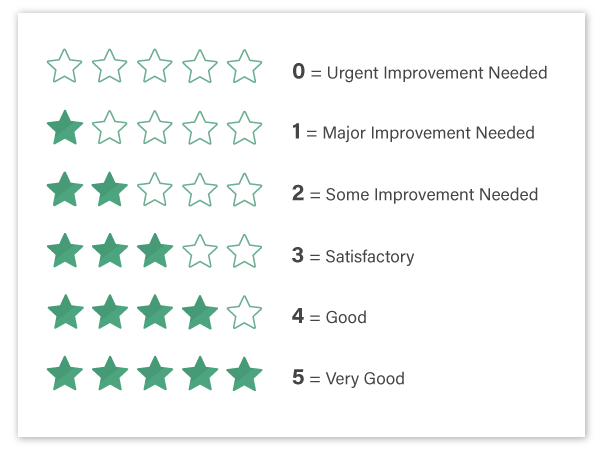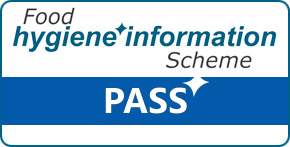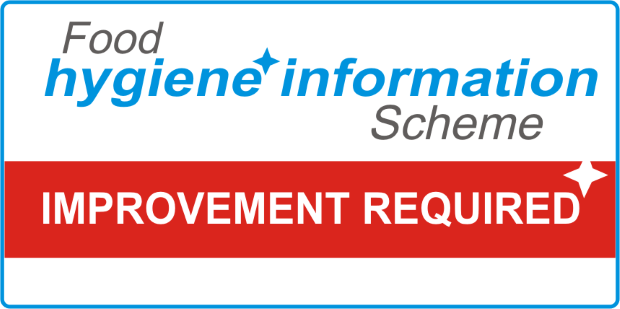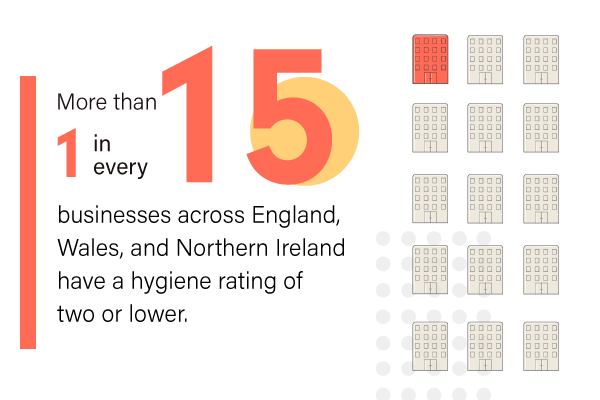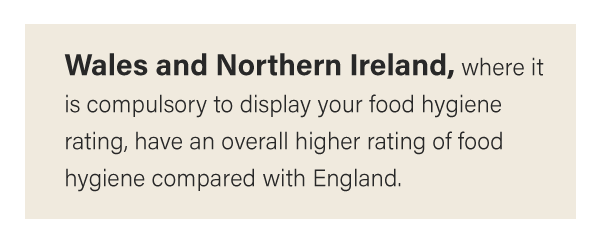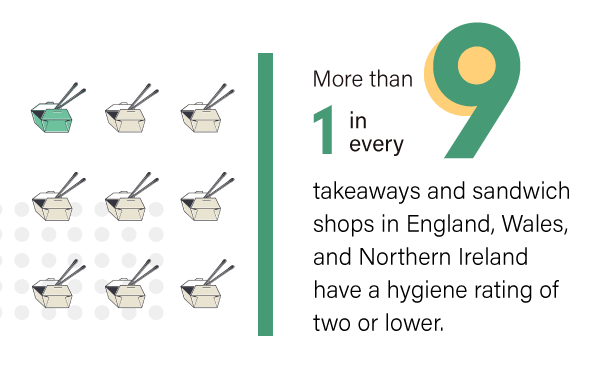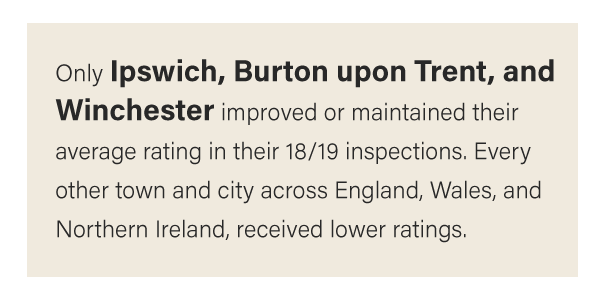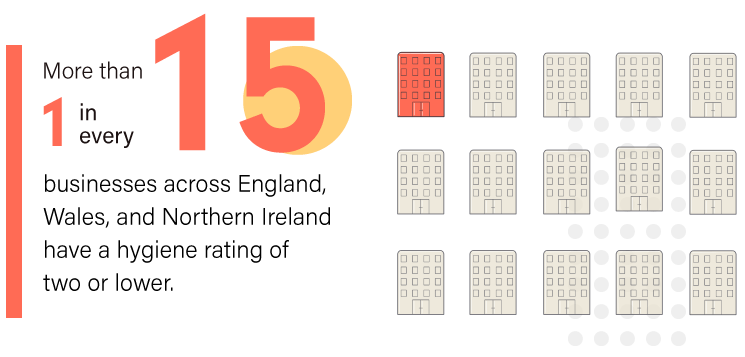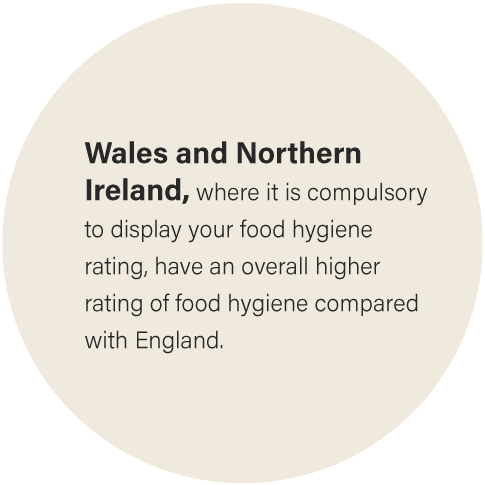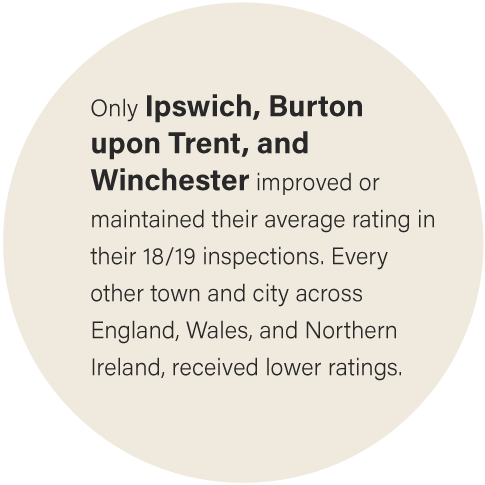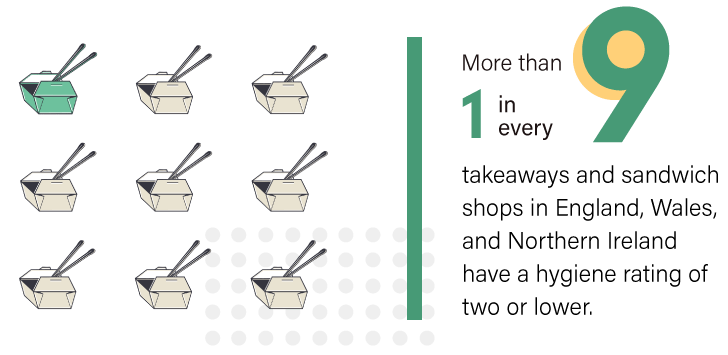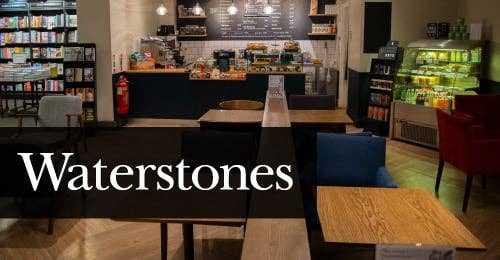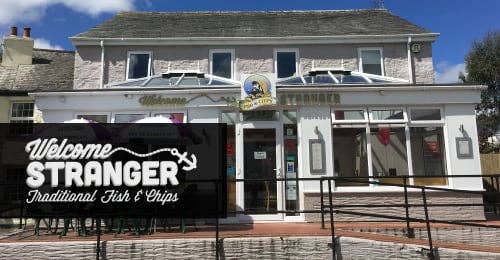Your Customers Care About Food Hygiene Ratings
Businesses should pay close attention to their food hygiene rating. As more and more customers recognise the sticker, it can have a significant impact on your reputation and profit. Customers may decide to go elsewhere and may avoid recommending you to others.
In a survey on why customers wouldn’t return to a restaurant, 57% of 1,000 respondents cited ‘a low food hygiene rating’ – more than those who responded with rude staff and slow service.
As displaying the rating is not compulsory in England, 49% of businesses choose not to do so. However, for 59% of consumers, this could translate to the premises having a poor hygiene standard, even if it doesn’t. The FSA actively encourage marketing a good rating to attract customers. Social media could be a particularly effective way of doing so, especially considering 1 in 5 people in the UK take to online platforms to decide on their chosen eatery.
One Poor Inspection Can Damage Your Business
One potential limitation of the scheme is the fact that an inspection is essentially a “snapshot” of the business, meaning the rating may not be wholly reflective of day-to-day running. Even Michelin starred restaurants can have a bad day, as the popular London eatery Dabbous discovered. The restaurant was awarded a rating of zero on one particular inspection, after EHOs discovered an infestation of mice. Fortunately, they were able to prove this was not reflective of their usual standards and, on a subsequent inspection, Dabbous was awarded a five.
It can take up to six months for premises to be re-visited following an unsatisfactory rating. It can take a further 28 days for the rating change itself to be reflected publicly. This explains why there may be a discrepancy between a rating online and one displayed on a building. As a result, businesses could be losing customers despite having improved their standards since the last inspection.
If you want to make sure you are fully prepared for an EHO inspection download our free inspection checklist.
Food Hygiene isn’t just about “Food Hygiene”
The term ‘Food Hygiene’ is often purely associated with how hygienically food is handled and prepared. As we’ve discussed, the FHRS comprises of more than this and each area is equally important to your overall food hygiene rating.
Issues with your management of food safety can significantly affect your food hygiene rating. This is why you must demonstrate appropriate HACCP Systems, staff training records, and the knowledge and capability of the manager.
We spoke to Eilidh Paton, owner of Alba Food Safety Consultancy and a Chartered Environmental Health Officer in Glasgow:
The scheme does require that we mark a premises as ‘improvement required’ if they have a repeat contravention from the previous inspection, which may be as little as a maintenance issue e.g. cracked tiles, which is a very trivial matter overall.
Eilidh Paton Alba Food Safety Consultancy
This could mean diners are put off a restaurant, unaware that the rating was given as a result of the building condition, as opposed to physical handling and cleanliness of food.
This is why, in order to obtain a good food hygiene rating, it’s crucial to make sure you get each of these areas right.
If you are looking for the knowledge and skills needed to manage your food business correctly then check out our online Level 3 Food Hygiene Course. It covers everything you need to know to ensure a food business is operating hygienically including contamination control, waste management and HACCP.
You Can’t Hide Your Food Hygiene Rating
Even if you choose not to display a lower rating, customers can still find it elsewhere. The Food Hygiene Ratings Information website is visited over 250,000 times a month, showing that there is real public interest in hygiene ratings. Similarly, food hygiene rating app Scores on the Doors is just one of many apps available in the UK and has been downloaded over 50,000 times from Google Play alone.
Just Eat, the popular takeaway food delivery service, announced in February 2019 that any zero-rated restaurants listed on the Just Eat platform would have until 1st May 2019 to improve their hygiene rating or they would be removed.
Also, any restaurants seeking to sign up to Just Eat would be required to have a minimum food hygiene rating of 3 or be registered with the FSA and awaiting inspection. In the same announcement, Just Eat explained plans to monitor food hygiene ratings of establishments by updating their system to use FSA data. This would mean that Just Eat would automatically be notified if a restaurant on their platform falls below a hygiene rating of 3. The steps Just Eat have taken emphasises again that food hygiene ratings are constantly being checked, not just by consumers, but also by other businesses.
Faking Your Food Hygiene Rating Isn’t Worth It
In 2018, the BBC exposed a number of establishments who were displaying a falsely high rating. Doing so is considered a fraudulent crime and can carry heavy consequences, as an Islington cafe learned when they were fined £2,500.
In Derby, a restaurant owner received a 5 year ban from running companies after displaying an incorrect rating. The business was forced to pay total fines of up to £9,000, highlighting that the cost of falsely advertising a rating is too high.
Although the infrequency of inspections may make it difficult to police this, it is becoming easier for customers to check the rating on the door against those held online by the FSA. Combine the fine with the inevitable bad press and reputational damage, faking a rating simply isn’t worth the risk to your business.
If you feel as though a recent inspection hasn't reflected your usual standards, use our guide to find out how to appeal your food hygiene rating.





